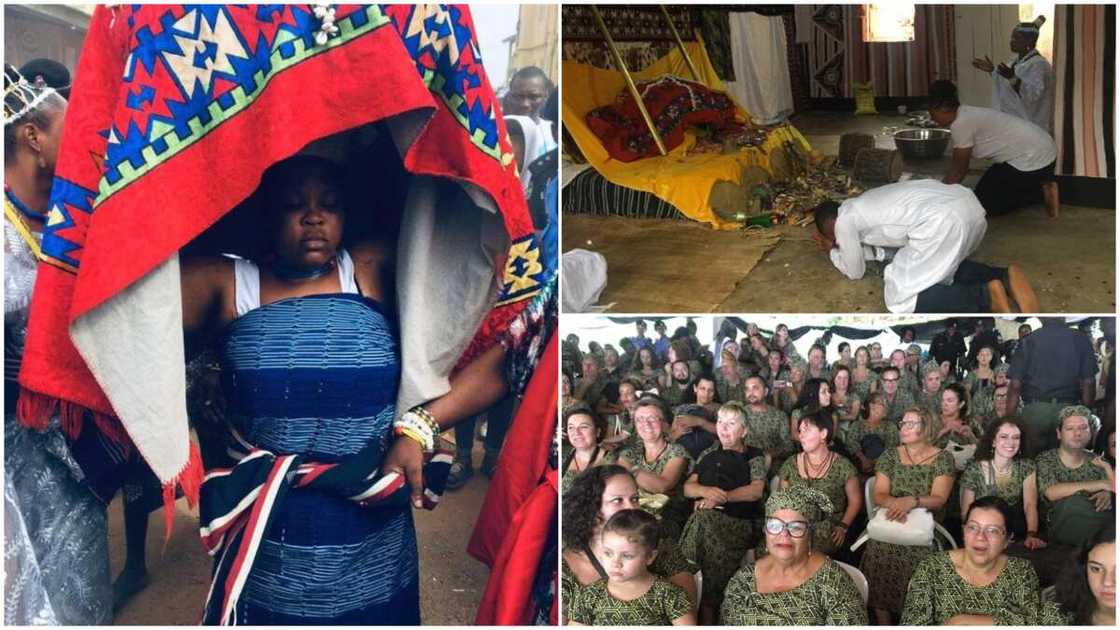Osun Osogbo: History Behind Festival and How a Clean Young Lady Always Plays Vital Role
Traditional festivals are an essential part of a country's tourism. This is because they demonstrate the peculiarity that always sparks the curiosity of international audiences.
PAY ATTENTION: Update Legit.ng App for free: the old version will be disabled soon
One can say they also play a huge role in a nation's revenue generation because when they draw in visitors, the country's economy improves as retailing booms.
Osun Osogbo is one of many tourist attractions in Nigeria. Apart from its religious essence, the festival is also an avenue to learn about culture and tradition.

Source: UGC
How the festival all began
Though there are no specific dates on when the traditional celebration started, BBC News has it that the first could be traced to 600 years ago and it is said to be the biggest festival of the Yorubas. No wonder people who identify with the Yoruba root always come from far and near to celebrate every year.
PAY ATTENTION: Subscribe to Digital Talk newsletter to receive must-know business stories and succeed BIG!
A report on the story behind the festival stated that a group of people headed by a great hunter called Olutimehin took shelter at the bank of the Osun river as a way to rescue himself and his people from famine.
While he was there, he had an instruction from the spiritual world to take his people to a place that is now known as Osogbo. The celebration is therefore in celebration of that mandate and in thanksgiving of the prosperity the migrants got. In 2003, the United Nations Educational, Scientific and Cultural Organization (UNESCO) recognised the festival.
Osun Osogbo celebration rites
One of the main things people look forward to is the Arugba (calabash carrier). Every year, a virgin lady is chosen to perform this duty. She is believed to be the link between the deity and Osun devotees. In her calabash are contents of sacrifices offered to the Osun river.

Read also
3 times people's stories of humble beginnings inspired many online, 1 person is selling popcorn
During the procession to the river, the virgin carries a calabash that is covered with a colourful cloth. Before the journey to the river begins, worshippers must first pray at the shrine.
The Ataoja of Osogbo, Oba jimoh Olanipekun, always plays a big role as he is the chief host. Kings from neighbouring communities visit him during the festival.
Speaking with Sacred Journeys, a pilgrim of the festival, Diedre Badejo said:
"I think anybody who goes on a sacred journey, anyone who ventures into another tradition is a soul searcher. They are seeking to find something within themselves they're trying to connect to."
The role of Suanne Wenger
Though the festival suffered a bit, it started becoming popular again in the 1980s. An Austrian-born aritist, Susanne Wenger helped in that regard. After her arrival in Nigeria in the 1950s, she decided to stay in Osogbo for the rest of her life.
During her lifetime, she helped to rebuild the shrines and also contributed to getting the groves protected.
Man in Osogbo dresses as Spider-Man
Meanwhile, Legit.ng earlier reported that a young Nigerian man, Jonathan Olakunle, goes around Osogbo in a Spider-Man outfit as he cleans the streets.
Olakunle revealed that every neighbourhood needs somebody like him. The young man said though he started environmental sanitation in 2004, he began going around sometime later.
He stated that he decided to work in a Spider-Man outfit because it draws people’s attention to what he is doing.
Source: Legit.ng




